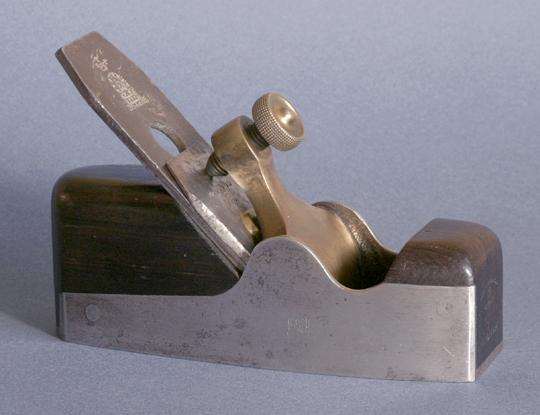
Several planes are being used due to differences in blade width and thickness. The unhandled Mathieson pictured above is typical. Each plane has been carefully tuned, and my experience has been that after tuning there are no noticeable performance differences among planes by different makers aside from the effects of bed angle.
After adjusting the plane to take a shaving about .001” thick, I count my strokes along the edge of a 4-foot board. Some of the strokes won’t take a full shaving along the entire length due to my planing technique or low spots in the board. I count these as half strokes and try to keep my overall count so that it reflects the equivalent of full length strokes. Each 25 full strokes make up 100 lineal feet.
For this study I’m setting the chipbreaker back from the cutting edge by about 1/32”. In this position it doesn’t break the shaving in any significant way, but it does transfer pressure from the lever cap to the cutting edge. This helps keep the blade firmly bedded.
Shaving thickness affects the amount of wear each stroke puts on the blade, although a .002” shaving doesn’t cause twice as much wear as one half as thick. I now judge shaving thickness by sight, and aim for the thinnest shaving I can take that is still full width and full length.
In the past I’ve measured many shavings using a micrometer with a ratchet knob that controls pressure on the shaving. To check the accuracy of that method, I’ve measured my test piece before and after taking 150 shavings. (This was the test of one blade used to plane 600 lineal feet of shavings from the edge of my 4-foot test piece. The plane was adjusted 6 times during planing, after each 25 strokes.) The loss in width was .126”. I believe shaving thickness measured with a micrometer may be somewhat greater than the amount of wood actually removed from the workpiece because the wood fibers of the shaving have been disrupted, giving the shaving a curly or rippled shape. The pressure from the micrometer ratchet may not be quite enough to compress the wood fibers to their original dimension.